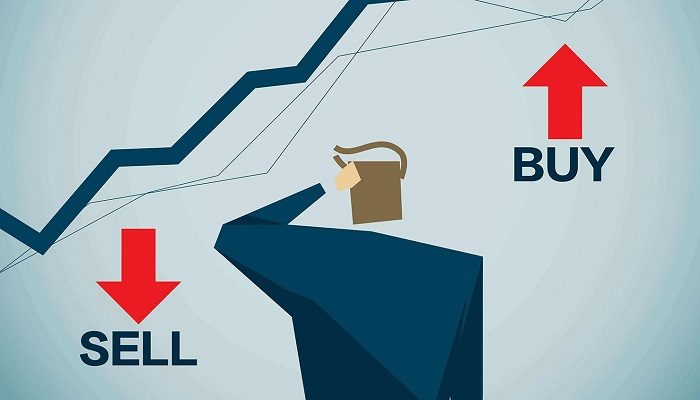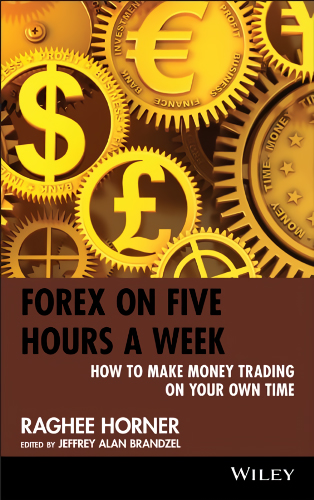Have you ever opened a trade only to see it executed at a different price level than you requested? Learn how to anticipate that problem here.
Anyone who has opened a trading position on any financial market must be aware of the risk of slippage. This condition is actually very common, so it certainly can happen to practically any tradable asset, including forex, stock, and even cryptocurrency. Therefore, it's important for every trader to understand how slippage works and how to deal with it. With such skill, you can limit your potential losses and minimize the damage if you do get negative slippage in your trade.

Contents
What is Slippage?
When you open a position on a live trading account, you must expect it to be executed right away. However, you might find that the order can be executed at a different price than what you requested. This is what slippage is all about. Let's say that a stock's bid/ask prices are currently at $150.52/$150.55 on the broker's platform. You open a buy order for 100 shares, expecting the order to get filled at $150.55. However, in only a matter of seconds, the price moves to $150.54/150.57 before the order is executed. The broker ends up executing the order at $150.57 and as a result, you get $0.02 negative slippage per share.
Other important facts about slippage are as follows:
- Any variation between the ordered price and the execution price is considered a slippage, so it can be negative or positive.
- It depends on a number of factors including market volatility, whether the order is a buy or sell, an opening or closing position, and the direction of the price movement.
- The platform will execute your order at the most favorable price available, but the actual result can be more favorable, equal, or less favorable for you.
Why Does Slippage Occur?
Financial markets are a complex space, meaning that there's a lot going on behind the scenes. You need to understand the following things in order to figure out why slippage happens:
High Volatility
High volatility is perhaps the biggest reason why slippage can occur. When the market is volatile, especially after the release of major economic news or data, the price tends to move really fast. During this period, brokers are typically scrambling to fill up their clients' orders. It can lead to significant price differences in executing the orders.
Not Enough Liquidity
For every buy order, there must be an equivalent sell order to match it. Similarly, whenever you sell an asset, someone must buy it from you. When the liquidity is low, it means that the market only offers a few opportunities to buy or sell assets. So it becomes more difficult to trade as the broker couldn't find the right match for the order you requested.
Big Position Orders
Another possible cause is when you order a very large position that's extremely hard to be filled in one go. Let's say you request 25 contracts of EUR/USD, but at this time, there are only 15 lots available. In this case, you will only get 15 and the remaining 10 will stay until the broker can find other sellers who want to buy them from you. In the meantime, the price might change, and hence, you could get slippage.
How to Avoid Getting Slippage
There are several ways to prevent slippage or minimize the impact. Here are some that you could do:
Avoid Major Economic Events
As mentioned above, the biggest slippages typically occur when the volatility is high. Therefore, try to avoid opening a position when there's a release of major economic news like FOMC announcements and a company's earnings announcement. This might sound like a great opportunity to make a profit from the large swings, but the same movements can also mean a much bigger risk, so it's better not to trade during this period to avoid getting slippage. To know when these high-impact events will be occurring, you can regularly check the economic calendar and mark the dates.
Even if you're not trading during a high-impact news release, you still need to maintain the risk of your trade well. Remember that the market is highly uncertain at times, so you need a safety net to keep your risk tolerable. In this case, using a stop loss is recommended. If the market turns against you and caught you by surprise, you won't lose too much money. Granted it won't eliminate the risk completely, but it certainly can minimize the damage by a mile.
Use Limit Order to Open a Position
Another option that you can choose to avoid getting slippage is using limit orders when opening a position. This order type basically allows you to open an order in the future at the price you want.
When a limit order is made, the order will be filled at the specified price only. If it's a sell order, the exchange will only execute it at the desired price or higher, and if it's a buy order, the exchange will only execute it at the desired price or lower. So, if the market can't fulfill your request, the trade simply won't be executed ever.
This also means that you can only get zero or positive slippage, which is favorable for you. The biggest downside is that your order might not be executed at all if the market price never reaches the desired price.
Use Stop Loss to Exit a Position
Once you open a live trading position, you're basically exposing your funds to market risks. There's not much that you can do to control how the trade is going to turn out, but you still can manage how you want to exit the market. Using a stop loss order could make sure that your loss is contained and won't get bigger than your tolerance level, although this can mean getting a little slippage in the process.
See How the Broker's Stance on Slippage
Lastly, it's worth mentioning that each broker executes the client's orders a bit differently.
Some brokers would execute the order no matter what even if the market doesn't match the requested price, while some others would execute the order as long as the price difference is within the trader's tolerance level. If the price is beyond the trader's tolerance level, the broker would either notify the trader first or immediately reject the order. If this happens, the trader would have to submit a new order and determine a new price.
Moreover, you can also choose to register with a zero slippage broker. This type of broker typically offers super-fast transaction speed, stable servers, access to multiple notable liquidity providers, and excellent safety measures.
The Bottom Line
In a nutshell, slippage is a specific condition in asset trading that can either be favorable or unfavorable for you as a trader (most slippages are negative, though). Understanding how slippage works can save you from potential losses and improve your trade.
One thing to keep in mind is that slippage is very common in asset trading. It's even inevitable at some point to avoid slippage because the price is always moving and there's nothing you can do to control it. Therefore, the first step is to accept the fact that slippage can happen sometimes, regardless of how good you are at trading.
Your best chance to avoid slippage is by managing your risk and trading wisely. It is recommended to trade when the market volatility is low but the liquidity is high. For instance, enter the market when the London or the US forex markets are just opened because the liquidity is high. It would also be really helpful if you choose brokers with fast transaction processing time This is to ensure that your order will be executed immediately at the price that you expected.

 Dedicated FREE FOREX VPS
Dedicated FREE FOREX VPS Free FOREX Virtual Private Server
Free FOREX Virtual Private Server MT4 Demo Contest, Get $500
MT4 Demo Contest, Get $500 Sign Up for an Account, Claim 60% Deposit Bonus
Sign Up for an Account, Claim 60% Deposit Bonus Free MT4/MT5 VPS 2024
Free MT4/MT5 VPS 2024 Send E-mail and Get Free Merchandise
Send E-mail and Get Free Merchandise $1K Refer a Friend Bonus for Pepperstone Pro clients
$1K Refer a Friend Bonus for Pepperstone Pro clients Maximize Your Earnings with 100% Deposit bonus
Maximize Your Earnings with 100% Deposit bonus Trade to Win, $5,000 Monthly Demo Contest
Trade to Win, $5,000 Monthly Demo Contest Claim 30% + 15% Deposit Bonus from LiteFinance
Claim 30% + 15% Deposit Bonus from LiteFinance














12 Comments
Sophia Marras
Jul 18 2022
Can slippage also occur if we use demo account to practice?
Divany
Jul 19 2022
Sophia Marras: Yup, slippage can occur even if you are using a demo account. But of course it won't affect you as much as you're basically trading with virtual funds.
Julietta
Jul 28 2022
How can I calculate slippage?
Divany
Aug 25 2022
Julietta: You can calculate slippage by using the following formula: ((Bid price - Ask price) / Quantity) 100%
Salome
Aug 9 2022
What are the pros and cons of using limit orders?
Divany
Aug 25 2022
Salome: Limit orders can ensure that you won't have to pay more than you want when buying/selling a security and they can be helpful during high volatility. However, limit orders may not be executed, which in turn cause you to miss an opportunity. They might also cost more than other order types in some brokers.
Ursulina
Aug 25 2022
Any tips on how to combat slippage in the volatile crypto space?
Divany
Aug 25 2022
Ursulina: The answer is actually simple: try not to make any trade unless they are completely necessary. Avoid obvious volatile periods like before or after company releases. Alternatively, you can also combat slippage by investing in popular assets that have deep liquidity or by using pending orders.
Sarauniya
Sep 13 2022
How much risk tolerance is acceptable and safe enough for beginners?
Divany
Dec 15 2022
Sarauniya: It all depends on your financial capability and trading skill. Some people are willing to risk more to make more, while others prefer to stay safe.Generally speaking, it's best to risk only about 1-2% of your capital, or maybe less if you are a complete beginner. Most traders get higher losses than they expect due to various factors, so it's a good idea to keep the original risk limit very low. Once you decide, don't forget to place a stop loss limit and stick to the plan.
Martinus Seng
Oct 23 2022
Based on your article, can I called this moment slippage?This moment irritates me greatly, and I have no idea what to do about it. How to know when it began and when it ended.
Divany
Dec 15 2022
Martinus Seng: If your order was executed at a different price than your order price, then yes, you just experienced a slippage. However, I personally don't think that technical analysis is completely useless during volatile times. The efficacy of technical analysis may be affected of various different factors, such as the currency you are trading, the tools you are using, the market condition, etc. A good technical analysis may have higher winning rates, but it's never 100% accurate. So, in order to make successful trades, you need to choose the appropriate instruments and try different approaches to see which one works best for the task.